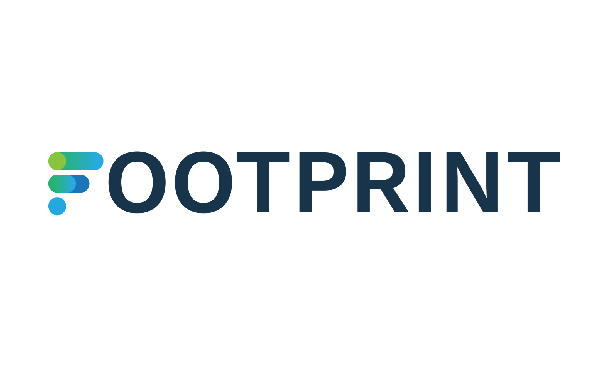COVID-19 Technology of Tracer Army
Knowledge Share
New Normal, Digital Transformation, Industry 4.0
Trust | Transparency | Traceability
COVID-19 Technology of Tracer Army

Contact tracing involves identifying people who are infected and then finding their recent contacts who may have been exposed. The goal is to interrupt the disease’s chain of transmission. A single person with COVID-19 can be expected to infect up to 2-3 people on average. This means, without other interventions, one infected individual could lead to nearly 60,000 cases after 10 rounds of infections. Closely watching these contacts after exposure to an infected person will help the contacts to get care and treatment, and will prevent further transmission of the virus. This monitoring process can be broken down into 3 basic steps: Contact Identification, Contact Listing, Contact Follow up.
The technology trend that is gaining mass adoption at an incredibly fast pace is contact tracing systems. Asian countries, including China, Singapore (Trace Together app), India (Aarogya Setu App) and South Korea, have managed to control the spread of covid-19 with the help of digital contact tracing apps to track movement of people and identify those who may have come in touch with infected people, said a report by UK-based data analytics company Global Data. Google and Apple are also teaming up with each other to unveil an API for digital contact tracing. In India a lot of smart cities are adopting latest technologies in order to fight with this virus in terms of dashboard, virtual work stations, tele-video consultation facilities etc. The majority of contact tracing services available are Bluetooth-based, because GPS is generally not precise enough, and it does not work well indoors. MIT in this regard recently developed the PACT (Private Automatic Contact Tracing) protocol, which leverages random ‘chirps’ emitted from each person’s smartphone. The chirps are emitted using the Bluetooth Low Energy (BLE) protocol, and their received signal strength is used as a proxy for the distance between the two devices
From contact tracing to creating buffer zones around COVID19 clusters, government administration is using mapping and location-tracking technology to fight the pandemic. Maps have been used to assess and tackle diseases at least since the 1850 cholera outbreak in London. Therefore, mapping the disease data through geographic information system (GIS) can assist policymakers and the authorities during outbreaks. GIS is a system designed to capture and analyse data using spatial trends. In the context of disease surveillance and monitoring, it integrates data such as the area of outbreak, population health and available infrastructure in the area to identify the population at risk. In recent years, GIS has been used to study and tackle several communicable and non-communicable diseases. Wherever there is so much of data generated through the various technologies, there is scope for data science to make an impact. Traditionally, contact tracing has required human involvement. When someone tests positive for the virus, public health investigators get in touch with them, learn about everyone they’ve been in contact within a certain time frame, and then manually track down and notify all those contacts. Digital or Technology contact tracing automates a part of this process by relying on people’s phones, to their gadgets, and location to map out their ongoing web of physical interactions. The most important challenges that comes with this array of assisting technology is the concern of PRIVACY. As often governments and authorities have to equally balance the outcomes of collecting data for better decision making, along with the privacy and safety of the people. As often it is said in this digitalized era, everything is available and PRIVACY IS A MYTH, but more often than not it has to be safeguarded and diligently used without any tamper of misuse. The time has come to either rethink our values around the trade-off between personal privacy and public safety in a pandemic or to accelerate technology innovation and policy development that can preserve both.
- Paradigm Shift in ESG April 14, 2024
- ESG Beyond the Reports March 21, 2024
- The Kenko Eggs A Case Study February 18, 2024
- New Frontier : Carbon Broader Adjustment Mechanism (CBAM) January 27, 2024
- Sustainable Transformation Future ESG Management January 21, 2024
- EUDR Compliance in Indian Trade January 7, 2024
- The Indian Coffee Story : Brewing Harmony December 16, 2023
- The Rubber Story : Between Growth and Sustainability December 10, 2023
- The 4R Strategy : Roadmap to Sustainable Growth December 3, 2023
- Sustainable Indian Coffee: A EUDR Perspective November 10, 2023
- Climate Tech and SDGs: Unlocking Potential October 21, 2023
- ESG Scorecards : TRST01’s Vision October 11, 2023
- The Imperative of Carbon Accounting October 8, 2023
- TRST01Chain on International Coffee Day October 1, 2023
- Footprint Lite – Embracing SME September 24, 2023
- Footprint ESG – Embracing Enterprise September 14, 2023
- Empowering Tomorrow: Innovation, Pivoting, and Sustainability at TRST01 August 27, 2023
- TRST01Chain for Scope 3 Reporting August 12, 2023
- Intelligence of AI with Footprint by TRST01 July 23, 2023
- Generation Z’s Impact on Climate Action July 17, 2023
- Assessing Sustainability: ESG Scorecard Model July 8, 2023
- Introducing TRST01Chain June 26, 2023
- QR Codes and Blockchain Technology June 22, 2023
- EUDR and Sustainable Procurement: The Role of TRST01 June 7, 2023
- Footprint by TRST01 : Revolutionising ESG Reporting with AI and Blockchain May 17, 2023
- Sustainability Unleashed: Carbon Footprints, Web3, and ESG in Climate Action April 26, 2023
- The Web3 Revolution in Food & Agriculture Supply Chain Management with TRST01 April 12, 2023
- Supply Chain Sustainability: Leveraging TRST01’s Web3 Framework to Reduce Carbon Footprints April 12, 2023
- Web3 Setting the Stage for Net Zero! April 1, 2023
- Engaging GenZ in the Metaverse to Conserve Forests March 19, 2023
Share Blog on:




